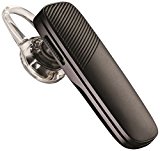Bluetooth headphones purchasing advice: how to choose the right product
- What You Need to Know
- The sound quality of modern Bluetooth headphones is very high.
- Bluetooth is the wireless replacement for cable connections via USB.
- A large number of devices support the Bluetooth digital wireless connection.
- Headphones with an open design have better surround sound.
- Headphones with a closed design shield noise.
- Headphones come in three forms: In-ear, on-ear and over-ear.
Listening pleasure without tangled cables
Headphones are a piece of personal feel-good electronics. As faithful companions, they give their owners the opportunity to immerse themselves in the soundscape of their choice wherever they are and thus keep the sometimes disturbing or simply dull surroundings at a distance. A good pair of headphones makes the underground ride more pleasant, blocks out colleagues’ phone calls and the clatter of keyboards in the open-plan office or creates the right atmosphere when relaxing on the sofa in the evening. Listening to music, audio books or podcasts on headphones is simply fun.
Often, however, the cables get in the way. Since the days of the Walkman, music lovers have been swearing about intertwined headphone cables and frantically unravelling tangled cables. Somehow these cables always get in the way. A careless hand movement can jerk in-ear headphones out of the ear cup rudely. The cables have another disadvantage: they tend to break. Even with careful handling, cables can break at stressed points, often near the plug. Then they are useless from one day to the next. A repair, if it is possible at all, is only worthwhile for expensive high-end devices.
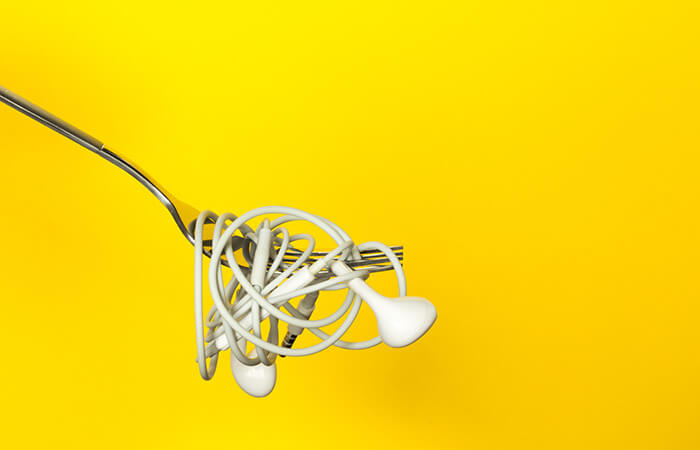
The alternative to annoying and fault-prone cable headphones are modern wireless headphones with Bluetooth. Current wireless headphones equipped with this digital radio connection technology offer greater user comfort.
Because the Bluetooth standard enjoys broad support, Bluetooth headphones are compatible with a wide range of devices. The shortcomings in terms of sound quality that older wireless models have are not present in Bluetooth headphones. Ranges of up to ten metres allow the wearer to walk around the home or office without interrupting playback – a line of sight to the playback device, as with old-fashioned infrared headphones, is not necessary.
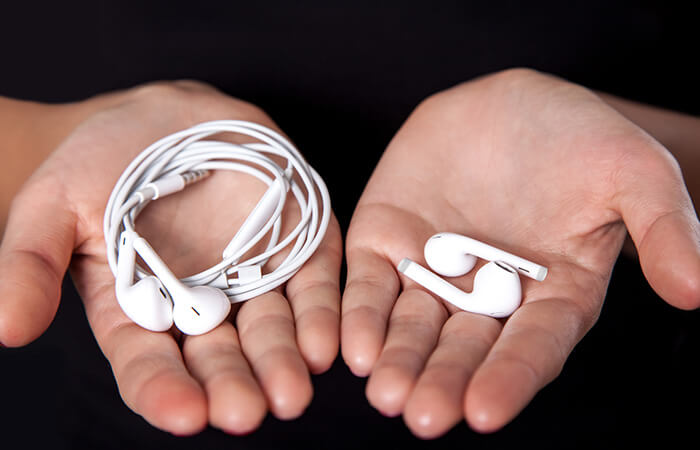
Advantages of Bluetooth headphones
The disadvantages of Bluetooth headphones are the slightly higher price compared to equivalent wired models, that they need to be recharged regularly and that the audio quality at the top end of the price range doesn’t quite match that of wired headphones. The big advantage of wireless headphones, on the other hand, is their ease of use. Less wear and tear also speaks in favour of Bluetooth headphones, because the cable is often a weak point, and nothing is more annoying than having to dispose of otherwise perfect headphones because the cable broke.
So music lovers have to weigh up what is more important to them. In many application scenarios, wireless headphones have an advantage:
- During sports: whether jogging, on the climbing wall or in the fitness centre, wherever there is a lot of movement, cables get in the way.
- When doing housework: If you want to sweeten your cleaning, tidying and cooking with your personal soundtrack, you benefit from the greater range of movement offered by Bluetooth headphones.
- On public transport: Having to deal with intertwined cables is not much fun, and the often tight spaces for movement in the underground or on long-distance buses don’t make it any better. Instead of dealing with the cable, owners of Bluetooth headphones simply turn on the music and enjoy the ride.
- Films and TV series: At a greater distance from the screen, as is common with large flat-screen TVs, the headphone cable has to be ridiculously long. Bluetooth is clearly more convenient here. Moreover, the user does not have to take off the headphones to get something to eat or go to the toilet.
When making a decision, it is also important to know that many Bluetooth headphones can be operated with a cable as an alternative. This allows users to enjoy the benefits of both worlds and switch to the cable connection when it matters most, for example, to conserve battery power on longer trips.
Different Bluetooth headphones
One of the most important criteria when buying headphones is the design. It is crucial for wearing comfort. There are basically three types:
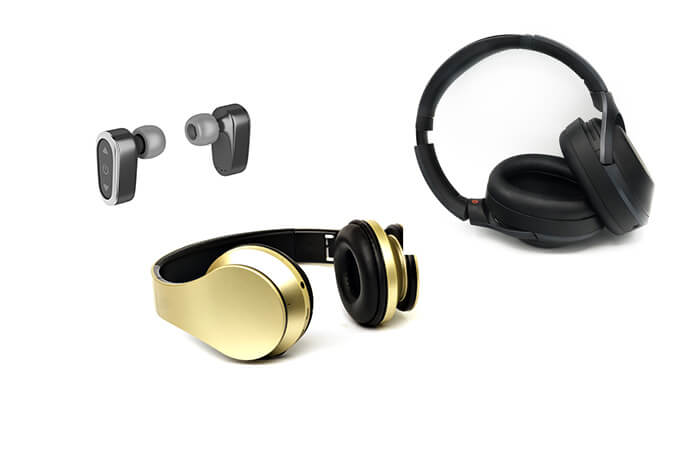
Bluetooth in-ear headphones
Small in-ear headphones are often included with smartphones. Their biggest advantage is their small size. They can easily be stowed in a jacket or even trouser pocket. Two variations are common: Headphones that deliver sound directly into the ear canal, and Earbuds. The latter are worn in the outer ear. They hardly shield the listener from outside noise, but are easy to insert. Whether they are comfortable to wear depends on the individual ear shape. Some wearers experience uncomfortable pressure when using earbuds.
Earphones that are inserted directly into the ear canal have an attachment made of flexible silicone or foam, unlike earbuds. This makes them very comfortable to wear. Some manufacturers even provide interchangeable attachments in different shapes so that there is a suitable one for every ear. Similar to earplugs, these earphones block out background noise, making them great for listening to music in noisy environments.
Be careful with in-ear headphones!
All in-ear headphones transmit sound energy directly into the ear canal and therefore carry an increased risk of hearing damage. If you want to be on the safe side, you should only use them at moderate volume.
Bluetooth on-ear headphones
These wireless headphones consist of two earcups connected to an over-the-ear headband. They rest on the ears with soft cushions. It is the classic design of Walkman headphones from the 1980s. On-ear headphones are larger than in-ear headphones, but still much more compact than over-ear models. Some also fold up for space-saving storage.
Bluetooth over-ear headphones
If sound quality and a comfortable fit are your main concerns, over-ear headphones are perfect. They enclose the ear cup and ideally don’t even touch it, making them comfortable to wear for long periods of time. One disadvantage, however, is their relatively high weight, which some users find uncomfortable in the long run. They are also relatively large and are therefore only suitable for mobile use to a limited extent. DJs usually use over-ear headphones with a closed design, as these shield very well against the background noise of the club.
Open or closed design?
Both on-ear headphones and over-ear headphones come in either open or closed-back designs. In-ear headphones are not usually referred to as open and closed, however earbuds typically have features of open headphones and models that sit directly in the ear canal behave similarly to closed headphones.
Advantages of open headphones
- Better surround sound
- Unadulterated sound image
- Less sweating of the ears due to good ventilation
- No fading out of important acoustic signals (doorbell, bicycle bells, etc.)
Advantages of closed headphones
- Less ambient noise
- More powerful bass
- No annoyance to third parties due to sound from the headphones
Open headphones have a perforated back that allows sound to escape, making them sound more natural. They are also more comfortable to wear because the ears are “ventilated” and do not sweat as much. The disadvantage, however, is that they are sound-permeable in both directions. So they do not protect against ambient noise, and the sound from the earphones penetrates relatively strongly to the outside. They are therefore poorly suited for listening to music in an open-plan office, for example, as they hardly attenuate disturbing office noises and colleagues can feel annoyed by the music that is also perceptible to them.
What distinguishes open and closed headphones
Closed systems radiate sound in only one direction, namely towards the ear. Less sound pressure is lost to the outside, which makes bass sounds in particular more powerful, but also less precise. In general, their sound is considered less natural than that of open headphones. They are used wherever ambient noise could interfere or, conversely, where as little headphone sound as possible is allowed to leak out. In studio recordings, for example, singers use closed models so that the sound from the headphones does not interfere with the recording. Because of their sound-insulating effect, they are also well suited as headphones for travelling. However, they are dangerous for active participants in road traffic, as approaching cars are also easily overheard.
Buying criteria for Bluetooth headphones
If you want to buy Bluetooth headphones, you usually have an idea of how much money you want to spend on them. Once the basic questions have been answered (in-ear, on-ear or over-ear? open or closed?), the next step is to compare Bluetooth headphones. The performance and equipment details of all the products in question are put under the microscope. Once the customer has finally decided and purchased a pair of wireless headphones with Bluetooth, it is best to carry out a small Bluetooth headphone test immediately after receiving the product by listening to some of their favourite songs and assessing the sound quality. If they do not meet his expectations, he may still be able to exchange them.
When do you recommend which Bluetooth headphones?
Perhaps the most important question when looking for a new pair of Bluetooth headphones is: What do I need them for? Which Bluetooth headphones are best depends largely on the answer to this question.
For the open-plan office
To be able to work in an open-plan office without the distraction of typing noise, conversations and phone calls, many employees rely on headphones. What is needed are models that not only drown out office noise but also shield it, i.e. closed headphones with good sound insulation and perhaps even active noise cancelling.
The headphones should also be comfortable to wear for a long time and easy to put on and take off. To be able to answer phone calls, a built-in microphone is an advantage. Battery life, on the other hand, is less important, as wireless headphones can be easily recharged at any time. The ideal office headphones are therefore closed over-ear headphones with hands-free function and ANC that can be worn comfortably. In-ear headphones are less suitable, as they can quickly become uncomfortable when worn for long periods and are more cumbersome to put on.
For the commute
Which model is best for the commute depends on whether the user travels to work by public transport or by car. While passengers on the underground and in buses want to shield themselves from outside noise as much as possible (and should do so to protect their hearing), it is important for active road users to be aware of ambient noise in order to recognise dangers in time. So some need open headphones or earbuds, others closed headphones or sound-insulating in-ear headphones, possibly also with ANC function. Otherwise, the requirements are similar: the longest possible battery life and a space-saving design are an advantage, and a hands-free function is also a good feature.
For travelling
Travellers want to carry as little weight as possible and block out the noise of the means of transport during long flights or train journeys. Sound-insulating in-ear headphones are therefore ideal. However, some users find it uncomfortable to wear such models for long periods of time; for them, foldable over-ears are most comfortable. Some users prefer on-ears in principle, but the headphones that rest directly on the ear are often uncomfortable during prolonged use and are usually less sound-insulating than earphones for the ear canal or large over-ears. It is important for travel Bluetooth headphones to have the longest possible battery life, as there is not always a power source nearby when travelling.
For sport
Bluetooth headphones for sports must be robust and resistant to dirt and sweat, fit stably and not restrict freedom of movement. Bulky over-ear and also on-ear headphones are only suitable for this purpose to a limited extent. Many manufacturers offer in-ear headphones especially for athletes. These are often splash-proof and connected with a cable or secured to the ear with a bracket so that they are not easily lost.

Whether sports headphones should be soundproof or not depends on the type of sport. If you go jogging, you should be able to hear the traffic so as not to expose yourself to an increased risk of accidents. In the gym on the treadmill or when exercising with weights, however, it may even be desirable if less ambient noise is perceptible.
Water sports such as swimming or surfing are a special case. Complete immersion in water is, so to speak, the ultimate test for the water resistance of the devices. Normal sports headphones cannot cope with this. Special headphones are available for this purpose that can withstand prolonged submersion. To get around problems with the range of the Bluetooth connection and reception under water, some of these devices have their own MP3 player module integrated. The music is downloaded directly to the wireless headphones via USB connection, and the headphones play it back without an external player.
For the home?
For music enjoyment at home, consumers are best advised to choose Bluetooth headphones that offer the highest possible sound quality and are comfortable to wear. An open over-ear headphone is ideal. The open design not only ensures that the sound is particularly clear and spatial, but also guarantees good ventilation for the ears. Since over-ear headphones do not exert pressure either in the auricle or ear canal or directly on the ear, they do not feel uncomfortable even when worn for a long time.
| In-Ear | On-Ear | Over-Ear | Soundproofing | Open | |
|---|---|---|---|---|---|
| Office | ✘ | ✓ | ✓ | ✓ | ✘ |
| Local public transport | ✓ | ✓ | ✓ | ✓ | ✘ |
| Active road users | ✓ | ✓ | ✓ | ✘ | ✓ |
| Travelling | ✓ | ✓ | ✓ | ✓ | ✘ |
| Sport | ✓ | ✓ | ✘ | ✓ | ✓ |
| At home | ✘ | ✘ | ✓ | ✘ | ✓ |
Sound quality
The most important feature of headphones is their sound quality. In this respect, Bluetooth headphones are in no way inferior to the classic wired variant; only for trained ears and in the absolute top class of headphones is the slight loss of quality due to the compression of the audio data perceptible. It is important that the headphones support the modern compression methods aptX and, when used with Apple devices, also AAC. As with wired headphones, however, there are also significant differences in sound quality between the individual models of Bluetooth headphones. Here, customers generally get what they pay for. A pair of headphones costing 30 euros naturally does not have as good a sound as a pair costing 300 euros, and this in turn is normally clearly inferior to a high-end product costing more than 1,000 euros. On the other hand, headphone technology today is generally at a very high level, so that even inexpensive devices offer very decent sound.
Battery life
There are huge differences in battery life. However, Bluetooth headphones should last at least ten hours. Some models even last 40 hours or more. Activating ANC (Active Noise Cancelling) can reduce the battery life by up to 50 percent. Interested parties should carefully check whether the specified runtime refers to the playing time with or without activated ANC.
Fit and comfort
The wearing comfort of headphones can be perceived differently from person to person; after all, everyone has a different head and different ears. When buying in a shop, customers often have the opportunity to try on a few models. When buying online, on the other hand, customers have to rely on the reviews of other users. If it turns out after the first few hours of use that the new headphones just don’t fit well, there is always the option of returning the device. The easy exchange option is an advantage of buying online. Whether a pair of headphones really wears well often only becomes apparent after a certain period of use. Trying them out in a shop is usually not enough to make a final judgement.
Bluetooth standard
The first version of the Bluetooth standard was published in 1999. That was a long time ago, and since then several updates have been decided. Theoretically, it is therefore relevant which Bluetooth standard a headphone supports. In practice, however, almost all currently available models are equipped with Bluetooth 4.1. In December 2016, the current Bluetooth standard 5.0 was adopted. It brings faster pairing (pairing two Bluetooth devices), an increased range and higher data transfer rates. Slowly, some Bluetooth headphones are also coming onto the market that support Bluetooth 5.0. However, in order to make full use of their advantages, these models must be connected to a playback device that also supports the latest Bluetooth standard. Bluetooth is downward compatible without any problems, but the performance then corresponds to that of the device with the oldest Bluetooth generation.
| Version | Published | Most important innovations |
|---|---|---|
| Bluetooth 1.0 | July 1999 | Maximum data transfer rate 732.2 kbit/s |
| Bluetooth 1.1 | February 2001 | Added signal strength indicator |
| Bluetooth 1.2 | November 2003 | Maximum data transfer rate 1 Mbit/s |
| Bluetooth 2.0 | November 2004 | Maximum data transfer rate 2.1 Mbit/s |
| Bluetooth 2.1 | August 2007 | Secure Simple Pairing |
| Bluetooth 3.0 | April 2009 | Maximum data transfer rate 24 Mbit/s |
| Bluetooth 4.0 | December 2009 | Reduced power consumption |
| Bluetooth 4.1 | December 2013 | Minor improvements of the predecessor |
| Bluetooth 4.2 | December 2014 | Better security features, even lower power consumption |
| Bluetooth 5.0 | December 2016 | Increased range |
Range
Bluetooth headsets hardly differ in range. Connections bridge about 10 metres under optimal conditions (i.e. without obstacles and disturbing waves). The new Bluetooth 5.0 promises a higher range – but for headphones and other mobile devices, this is usually not utilised by the manufacturers. This is because a higher range also means that the Bluetooth module has to transmit with more power. This would lead to a considerable deterioration in battery life.
Noise-cancelling function
Noise-cancelling, which is often abbreviated to ANC (Active Noise Cancelling), works with anti-noise. This sounds a bit like science fiction, and in fact there is some sophisticated technology behind the abbreviation. Microphones on the outside of the headphones pick up the ambient noise, and the membranes inside produce sound with opposite polarity that neutralises the noise. This works best with constant noise sources such as the hum of an engine. The volume of speech is hardly reduced by ANC.
The technology was originally very expensive and was used almost exclusively in aircraft pilots’ headsets. In the meantime, however, many Bluetooth headphones in the medium price range and even some extremely inexpensive models are equipped with it. However, the quality varies greatly. If you want really well-functioning ANC, you should budget at least two to three hundred euros. For all their science fiction charm, passive noise cancelling, i.e. closed headphones with good sound insulation, work at least as well as ANC in many cases and can be had for considerably less money.
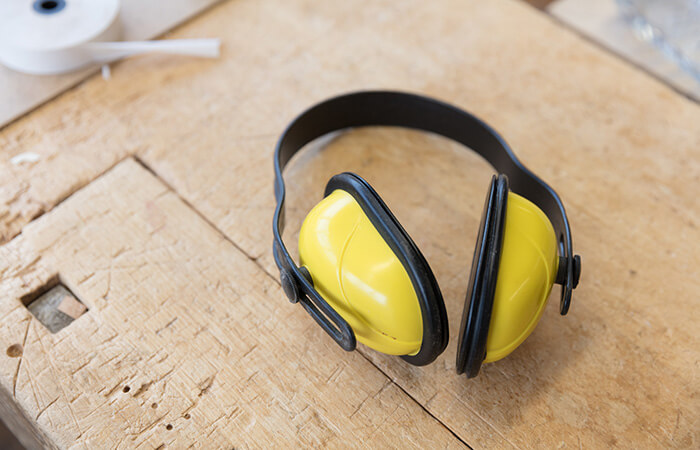
Hands-free function
Perhaps the most important additional function for Bluetooth headphones is a built-in hands-free function. It allows you to conveniently take calls without taking your phone out of your pocket. For this, the headphones need a built-in microphone.
Fortunately, a hands-free function is quite common in current Bluetooth headphones. The manufacturers have apparently realised that these devices are mainly bought as a replacement for the often inferior headphones or earphones that customers find in the scope of delivery of their smartphones. Another reason is probably that Bluetooth headphones are often equipped with ANC, which requires a built-in microphone anyway, and it is only a small step from the built-in microphone to the hands-free function.
Folding mechanism for easy storage
Headphones with a headband, especially large over-ear models, require quite a lot of storage space in a backpack or bag. This can be remedied by a folding mechanism that manufacturers have built into some of their products. The earpieces of such Bluetooth headphones can be folded so that the user can store the headphones in a space-saving way. When folded, on-ear headphones take up about as much space as a pair of glasses in a case. Over-ear models are somewhat bulkier due to their large earcups.
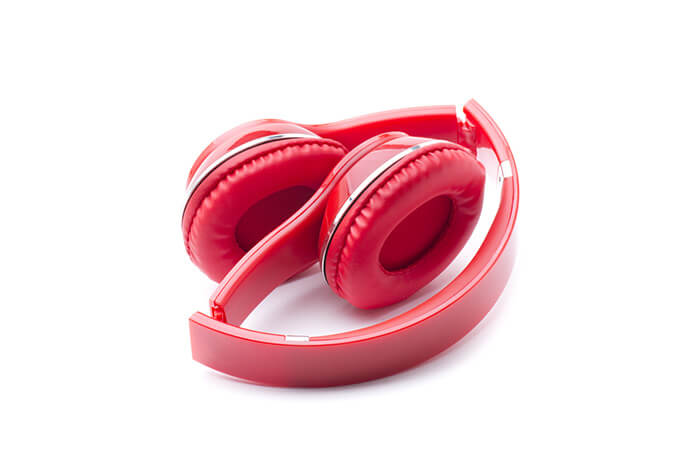
Controls
Just about all Bluetooth headphones have controls attached directly to the housing. These are:
- Turning the device on and off,
- Answering calls
- Interrupting playback
- Adjusting the volume,
- fast-forwarding and rewinding,
- and activating and deactivating additional functions such as ANC.
Both traditional buttons and touch control panels are common today. The decision for one or the other is mainly a matter of personal preference. Some users do not want to miss the haptic feedback of mechanical buttons, others prefer the touch control that is perceived as effortless.
Some Bluetooth headphones in the mid-range and high-end segment also have an integrated voice assistant such as Amazon’s Alexa or Google Assistant. This turns the headphones into a multifunctional everyday companion. For example, they control smart household electronics or provide information about things like the weather or train connections.
Exchangeable ear cushions
Since Bluetooth headphones work without cables, it is often another component that becomes unusable first, namely the ear cushion. These parts, which are usually made of foam or artificial leather, become brittle over time and crack or lose black fluff. There are also hygienic reasons for replacing them regularly, as they are worn directly on the skin and thus absorb sweat. After months or years of use, they are simply no longer appetising. Unfortunately, the ear cushions are not replaceable on all models – as a rule, this is only possible on higher-priced models.
Cable
Many Bluetooth headphones have a 3.5 millimetre jack, and thus also offer the option of connecting a cable. This is useful as a backup option in case the battery of the headphones runs out on the road. In most cases, headphones with a cable connection already come with a suitable cable. However, there is no shortage of audio cables on the market; there is a differentiated range for the most varied demands and budgets. If you need a cable or have special requirements, it is no problem to buy a third-party cable.
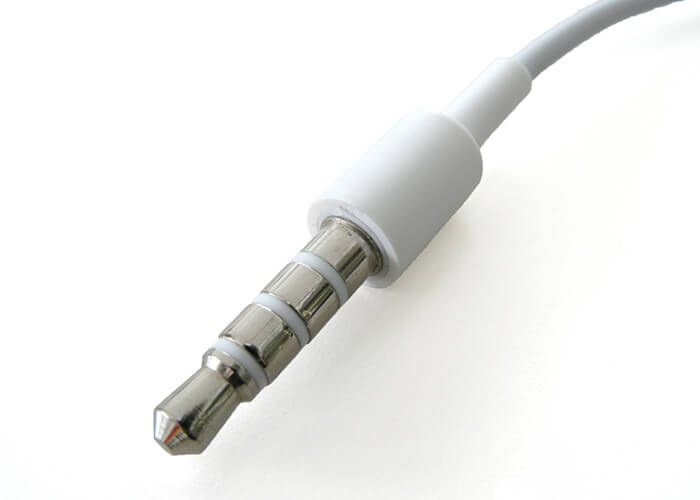
Cases for transport
A useful accessory for Bluetooth headphones are bags or cases for transport. They are practical for in-ear models because the often tiny parts are otherwise difficult to find in your luggage. Soft cases protect the headphones from dust and dirt, while hard-shell cases offer additional protection against breakage and scratches. Cases, pouches and bags are often included in the delivery anyway, but can also be purchased separately as optional accessories. If the manufacturer does not offer such a case, generic products often fit as well.
Popular headphone brands
The brand is perhaps not the most decisive purchase criterion for headphones. Much more important are the sound quality and the ease of use and wearing comfort. But it is not completely unimportant either. Different brands have different strengths and, last but not least, their very own style, which can be a relevant purchase criterion for headphones, which also function as a fashion accessory. Anyone who has ever paid attention to the headphones worn by passers-by in public spaces will certainly have noticed the following brands:
| Marke | Merkmale |
|---|---|
| AKG | The Austrian company AKG Acoustics originally produced microphones and headphones for professional users. Today, it belongs to the South Korean Samsung Group. The headphones still have an excellent reputation. |
| Apple | Hardly any manufacturer has shaped the headphone market in recent years as much as Apple. Its small, white earphones became a much-copied icon as an accessory first for the iPod audio player and later for the iPhone. The wireless variant “AirPods” was initially ridiculed, but has since triggered a trend towards Bluetooth headphones. |
| Beats | Beats is the headphone brand of US rapper Dr Dre. It has belonged to the computer manufacturer Apple since 2014. The headphones with the distinctive “b” as their logo appeal to a young, urban target group. |
| Bose | The US company Bose has made a name for itself as an innovative manufacturer of high-end speakers. The company’s noise-cancelling headphones are among the best on the market. |
| JBL | JBL is a brand of the audio accessories manufacturer Harman and is best known for cinema speakers and high-quality home audio systems. The wide-ranging headphone segment offers something for every group of buyers. |
| Marshall | No rock concert is complete without Marshall’s iconic amplifiers. The manufacturer also uses its fame in this field to market its headphones, which, with their distinctive square shape, are clearly reminiscent of guitar amplifiers. |
| Sennheiser | The company from Lower Saxony has been in existence since 1945 and is named after its founder Fritz Sennheiser. Although Sennheiser also manufactures studio equipment and headsets, headphones are always the focus. The brand embodies not only German engineering, but also sportiness and style, at least since its cooperation with Adidas. |
| Sony | Of course, the Japanese Walkman inventor Sony also produces its own headphones. In terms of quality, they are in no way inferior to other brands. Their design is considered serious or boring, depending on personal preference. |
| Teufel | Another local champion among headphone manufacturers is Teufel. The company was founded in Berlin in 1979 and still has its headquarters there. |
How Bluetooth headphones work
Bluetooth is a digital radio connection, just like the WLAN radio network. However, while WLAN is intended to connect end devices such as desktop PCs, notebooks and smartphones with each other, Bluetooth is about connecting an end device with accessories. Bluetooth is therefore a wireless USB cable, so to speak.
Unlike WLAN, Bluetooth was developed from the start for use in mobile devices. Bluetooth modules are cheap, small and power-saving. However, this also means that they have much less transmitting power and thus also range than their WLAN counterparts. The maximum distance to the playback device with commercially available Bluetooth headphones is ten metres, and that only under optimal conditions. If there are obstacles such as walls, doors or pieces of furniture in the way when the headphones are used indoors, the bridgeable distance can be considerably shorter.
In order to function, Bluetooth headphones must transmit radio signals. To do this, they need electricity, just as they do to generate sound. In contrast to conventional headphones, which draw the small amount of power necessary for their operation from the audio cable, they need a power source in the form of a rechargeable battery that the user must charge regularly. In this respect, the handling of Bluetooth headphones is unfortunately somewhat less convenient than that of wired models. However, the devices do not need to be charged too often: depending on the model and volume, you can play around 20 hours of music with one battery charge.
Fast frequency changes for undisturbed wireless connections
To prevent several connections from getting in each other’s way, Bluetooth uses the frequency hopping method. This means that the transmission frequency is constantly changed. To do this, Bluetooth devices connected to each other must constantly exchange information about the frequency at which they will send the next data packet. If two Bluetooth devices transmit on the same frequency at the same time, it is not a big deal. The devices recognise the failed transmission and repeat the attempt on another frequency. The whole thing happens so fast (up to 1,600 frequency changes per second) that the user does not notice any judder or interruption in playback.
Crystal clear sound quality thanks to aptX and AAC
Analogue wireless headphones are prone to noise interference when signals and electromagnetic fields get in their way. With digital Bluetooth technology, this has not been a problem from the beginning. In case of transmission errors, the faulty data packet is simply sent again.
Nevertheless, audiophile ears have not been very happy with Bluetooth headphones in the past. This is because the data transmission rate is not sufficient to transmit audio signals in original quality. Therefore, they are compressed using a lossy algorithm that works similarly to MP3. Although this works in such a way that it removes information from the audio data that cannot be perceived by humans, hi-fi fans could still recognise a difference from the original material if they listened closely.
All current Bluetooth headphones, on the other hand, use the aptX codec to compress the audio data, or a variant of Apple’s own audio codec AAC for communication with Apple mobile devices. These modern compression methods significantly increase the sound quality. Only very hi-fi accustomed ears will notice a difference in sound quality compared to wired headphones.
Caring for and cleaning Bluetooth headphones
Bluetooth headphones are user-friendly consumer electronics. There is not much the user can do wrong with them. However, if you pay attention to a few points, you will enjoy these small sound generators for longer.
It is worthwhile to clean your headphones occasionally. This is a question of hygiene, because like clothes, they are worn directly on the body and come into contact with sweat and, in the case of in-ear headphones, even with earwax. In addition, particularly serious dirt can impair the sound quality.
It is important never to immerse the headphones in water, hold them under running water or spray them with water, as this can damage the sensitive electronics. However, it is safe to dampen a soft cloth with lukewarm water and carefully wipe the headphones with it. It also does no harm to add a little soap to the water. Even gentler and in many cases sufficient is to simply wipe the headphones with a soft microfibre or cotton cloth.
In-ear headphones usually have removable attachments made of rubber or silicone. The user can remove these and wash them under running water. Particularly stubborn dirt can be removed with cotton swabs.
It is annoying when dirt gets caught in the protective grille of the headphone diaphragm. Often, careful blowing is enough to remove it. Alternatively, the user can use a compressed air spray or a cold (!) hair dryer to remove loose dirt from the protective grille. If this does not help, dabbing with an adhesive strip often leads to success.
Protection and safety
A small “instruction leaflet” is unfortunately necessary for headphones, because they pose risks if used improperly. Two aspects are problematic: On the one hand, it is possible to miss dangerous signals in traffic when wearing headphones, and on the other hand, there is a risk of hearing damage if the sound from headphones is continuously too loud.
Avoiding hearing damage
It is common knowledge that excessive volume can permanently damage hearing. The risk increases with the volume and the duration of listening. Experts therefore advise following the 60/60 rule. This means using headphones at a maximum of 60 percent of the possible volume and limiting the listening time to a maximum of 60 minutes per day. The legislator has taken precautions in this regard: Playback devices sold in the EU can reach a maximum volume of 85 decibels or at least display a warning if the user exceeds this limit. Users who care about their hearing are strongly advised to heed these warnings.
Consumers can also do their ears some good by choosing the right headphones. In-ear headphones, especially those that are inserted directly into the ear canal, are significantly more harmful than models that rest on the ear. It is also advisable to choose closed, sound-insulating headphones, as these allow users to block out ambient noise instead of drowning it out by turning up the volume.
Headphones for children
For sensitive children’s ears, high noise exposure is even more harmful than for adults. Anyone who gives headphones to children should therefore definitely choose special children’s headphones. Almost all models have a maximum volume limit of 85 decibels. In addition, their dimensions are adapted to the smaller heads and ears of children. Parents should talk to their offspring about the dangers of noise damage and encourage them to always keep the volume as low as possible. It is also a good idea to make sure that children do not use their headphones for more than 60 minutes a day.
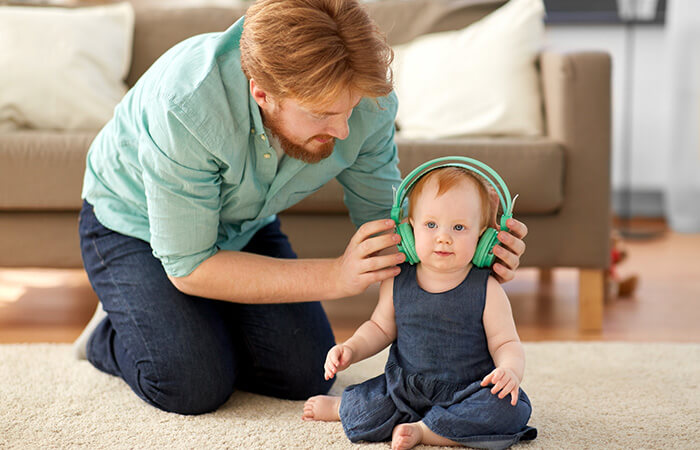
Bluetooth headphones in road traffic
While driving motor vehicles and bicycles, headphones are not generally prohibited in Germany, but it is not allowed to isolate oneself acoustically. Danger signals such as approaching cars or the siren of blue-light vehicles must not be overheard.
In plain language, this means: Sound-insulating headphones are taboo for drivers, and the volume must not be set so high that ambient noise is no longer perceptible. Drivers should adhere to this not only to comply with the law, but also for their own safety.

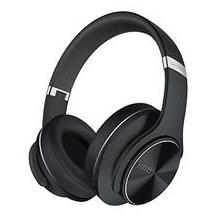
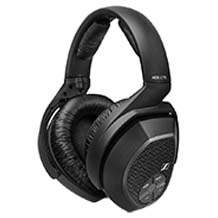
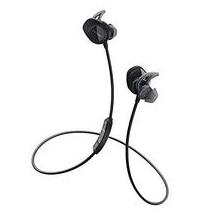
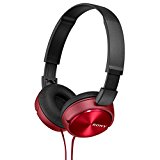
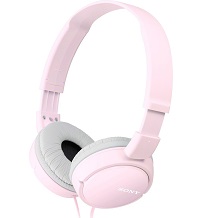
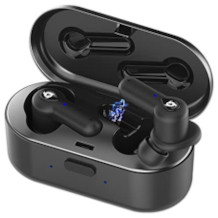
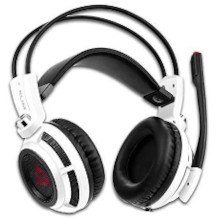
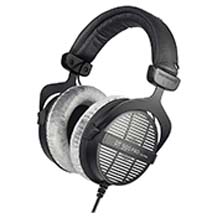
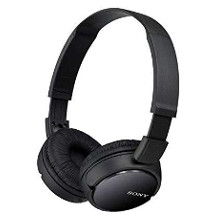
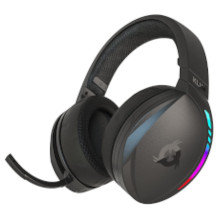

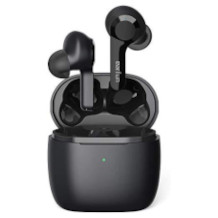
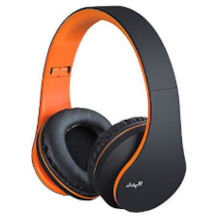
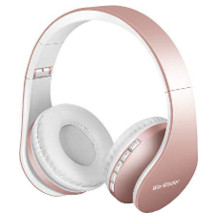
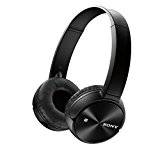
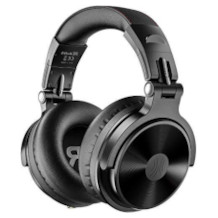
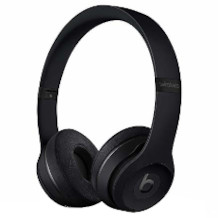
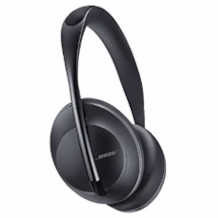
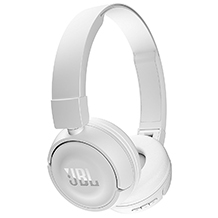
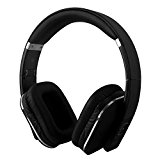

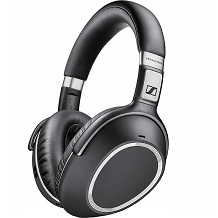

 276 reviews
276 reviews

